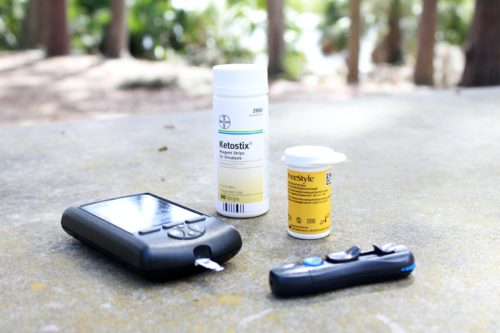

Implementation of Section GG Functional Abilities and Goals on OASIS
The Improving Medicare Post-Acute Care Transformation Act or IMPACT Act was signed into Law in 2014. The IMPACT Act requires assessment data to be standardized and interoperable to allow for exchange of data among various post-acute care providers. The providers covered under the act include home health agencies (HHA), skilled nursing facilities (SNF), in-patient rehabilitation facilities (IRF) and long-term care hospitals (LTCH). The intent of the act was to change Medicare’s post-acute care services, improve outcomes and their reporting through shared decision making, care coordination, and enhanced discharge planning. To accomplish this goal, standardized data are to be collected by all the post-acute care providers using common assessment tools.
Section GG on the musculoskeletal part of OASIS was introduced to meet this intent of IMPACT act. Section GG deals with collection of some quality data regarding patient’s current functional status on various tasks and the clinician’s established reasonable discharge goals on performance of the same, considering all the limitations that patient currently has and the room for improvement. This quality data is aimed at helping better assessment of an individual’s current functional status and measurement of progress made with the service provided. Though there seems to be overlap between the M and GG sections on the musculoskeletal portion of the OASIS, they must be considered separately and answered using the guidance offered on the respective questions. Correlation between the choices selected for same or similar tasks on these two sections of OASIS is not expected.
GG0100 on Section GG of OASIS-E
This question discusses the patient’s ability to perform on the tasks listed here, prior to the current illness or exacerbation or injury that prompted a home health referral. While answering these questions on OASIS, clinician can consider the input provided by the patient and/or caregiver regarding their prior performance. At the same time, clinician should also consider patient’s health history and all the various co-morbidities one has to be able to judge an individual’s safe prior performance on the tasks listed. The term assistance denotes human assistance. An individual able to safely perform with the aid of an assistive device is still considered independent.
Patient’s prior functioning in 4 areas is answered on this question
- Self-care activities involving activities of daily living such as, bathing, dressing, toileting & personal hygiene, and ability to self-feed.
- Indoor mobility involving ability to walk around in the house from one room to the other.
- Accessing stairs involving getting up and down the stairs. The stairs could be inside or outside the house
- Functional cognition involving some instrumental activities of daily living, such as, ability to plan the daily life, do shopping for needed personal supplies, and self-administer medications.
Patient’s prior performance in these 4 areas is rated on a scale with 6 choices. The following discussion on these choices applies to all the 4 areas addressed under this question.
Answers for GG0100
- Choice 3 indicates patient was totally independent on performance for the activity under consideration. For example, while evaluating one’s prior performance on self-care tasks, an individual is rated 3 only if he or she was totally independent on all the activities grouped under self-care tasks, such as, bathing, dressing, toileting & personal hygiene, and ability to self-feed. One with history of receiving any assistance from caregivers, even reminders, would not qualify them for a rating of 3.
- As we move from choices 3 to 1, caregiver dependence for activity performance progressively increases, with choice 2 indicating history of patient needing some help and choice 1 indicating history of patient’s total caregiver dependence.
- If an individual was totally independent performing one activity listed under the task and needed partial assistance with another, he or she could qualify for a rating of 2. For example, an individual who was independent with the dressing activity but needed assistance with bathing activity, both grouped under the same task – Self-care activities.
- Individuals with history of complete caregiver dependence for all the activities listed under the task qualify for a rating of 1. For example, an individual who needed assistance on bathing, dressing, toileting & personal hygiene, and ability to self-feed, basically all the activities listed under the task Self-care activities.
- Choice 9 indicates – not applicable. Clinician can pick this response, if the patient was unable to perform the activity before this current illness or exacerbation or injury that prompted a home health referral. For example, if a patient is chronically wheelchair bound and was not accessing stairs for a long time before the current illness or exacerbation happened, picking choice 9 for this patient as a response for accessing stairs can be appropriate.
- Apart from these 4 choices, we have two other choices on this question. Choice 8 indicating unknown and the last choice being – Not assessed/No information. If patient’s prior performance on activities was not evaluated at start of care or resumption of care, these choices can be coded. Clinicians must try minimizing picking these choices, as they provide no information on patient’s prior functioning. Having poor or no information on patient’s prior functional status can make it difficult to establish a reasonable patient discharge goal.
Editor's Pick
Leave A Comment
Related Posts
Transition from OASIS-E to OASIS-E1: Key Changes and Implications for […]
Importance of Clinical Narrative and Nurse Teachings while Documenting Home Health OASIS Assessments
Importance of Clinical Narrative and Nurse Teachings while Documenting Home […]
Navigating the Complexities of Medicare and Medicaid Reimbursement for Home […]
Engaging Your Team Around the IPR: Turning Data into Motivation […]
Engaging Your Team Around the IPR: Turning Data into Motivation […]

